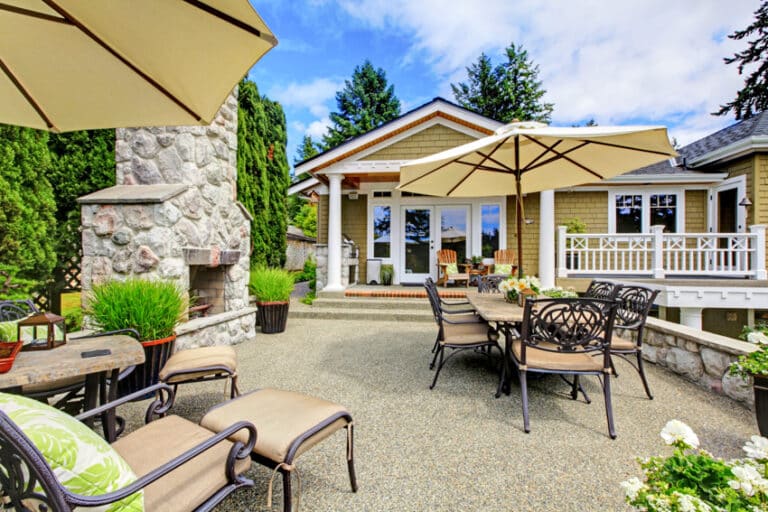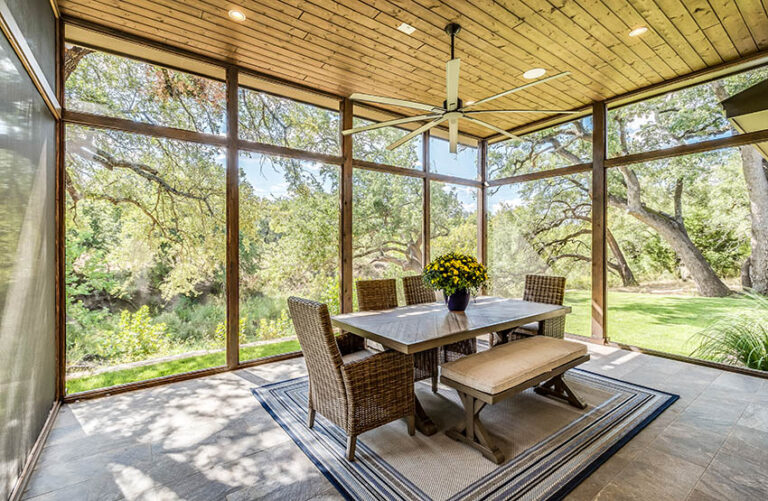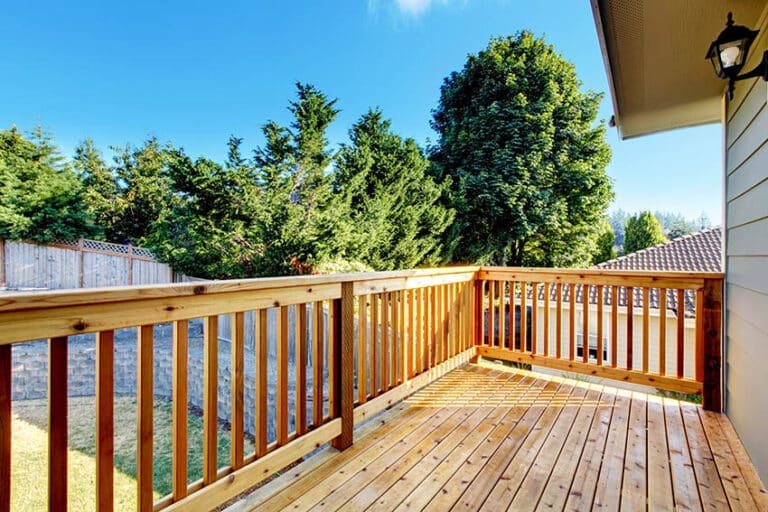What Are The Types Of Stamped Concrete Patio Designs?
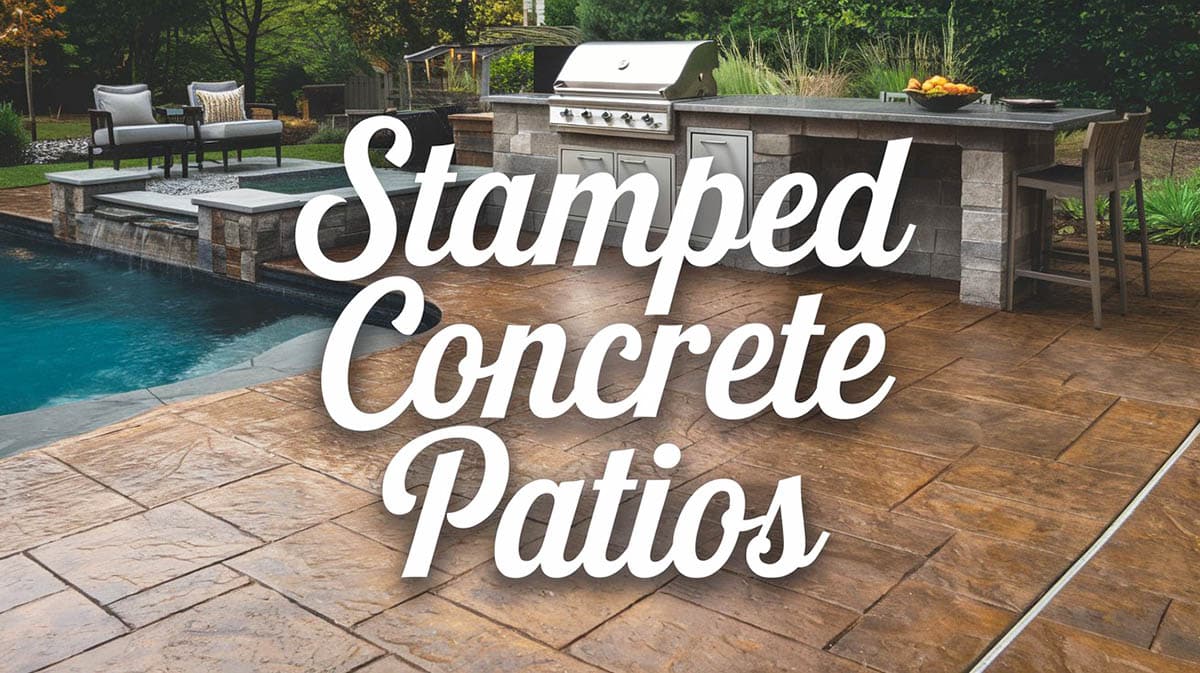
Your patio is an important part of your home. It can serve as the place where you entertain friends during a summer barbecue or have a relaxing poolside afternoon. Since it’s such an integral part of your home, you will want to make sure it looks good. When you first start looking around, your choices can seem overwhelming. One of the most stylish options is a stamped concrete patio. Today we’re going to break down one of those choices into everything you need to know: stamped concrete patios. For stone patio designs visit this page.
What Is Stamped Concrete?
Stamped concrete is a great way to get high-end designs without the high cost. This type of patio is installed by pouring concrete into the patio area—just like a plain concrete patio. Once the concrete is poured, it’s stamped with your choice of a wide variety of designs. Flexible and large polyurethane stamps are used to make these patterns. Each of these stamps is usually around 2 feet by 2 feet and an inch or a couple of inches thick.
Your contractor might press these into the concrete themselves, or they may use a tamping tool to do so. The contractor will also spray the stamp before use to ensure that no concrete sticks to it. Because of this process, most homeowners vouch for a professional installation rather than taking it on as a DIY project. While a seasoned DIYer might be able to pull it off, it’s a difficult process with specialized tools, and any mistakes risk being permanent.
Stamped Concrete Patio Styles
When many people think of concrete patios, they think of simple gray slabs. As we’ve already discussed, this isn’t the case regarding stamped concrete. With so many options, it can be overwhelming to choose and know what options you have to consider. So, let’s take a look at some of the most popular patterns to get an idea of it.
Stamped Brick Pavers
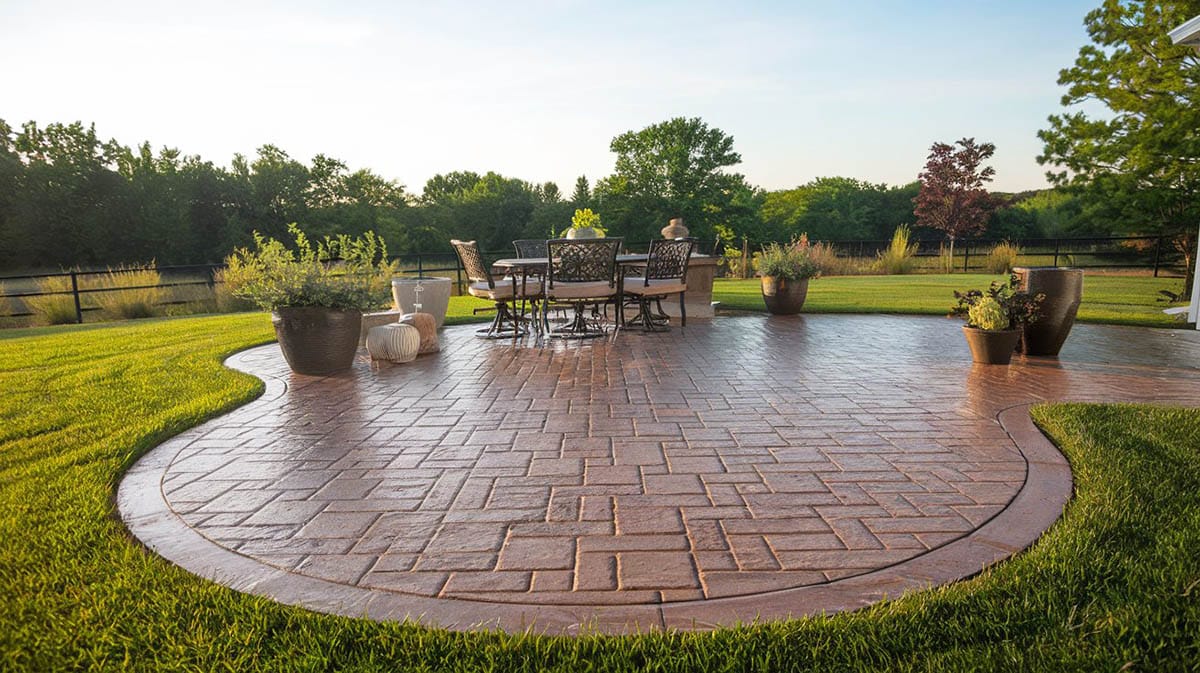
Genuine brick patios can cost you as much as $20 per square foot. This means it’s great news that you can get that same pattern for a fraction of the price. Brick stamped concrete is a good way to give your patio a classic and uniform appearance. Brick stamped concrete doesn’t just use a set of rectangles to create the shape. A full illusion is given by stamping in a textured brick pattern with coloring meant to resemble the real thing. In other words, you can get a pretty spitting image of a brick paver layout.
It should also be noted that any brick pattern can be used. The most commonly used pattern is a running bond – this is the pattern most brick walls take on. Stack bonds follow the same thread but stack vertically. When it comes to patios, many want a unique brick pattern. Basket weaves are popular and they use an alternating horizontal and vertical surface. Diagonal basket weaves use the same idea with a slight slant. Herringbone designs use a “zigzag” pattern that can be traced back to paved streets in the Roman Empire.
A Spanish bond is beautiful but, in traditional bricklaying, rather difficult. It involves a pattern of four, full outer bricks wrapping around a center half-brick. Each section makes up about a square foot. Since stamped concrete doesn’t require bricklaying, this can be a great way to get a more complicated style.
Stamped Cobblestone
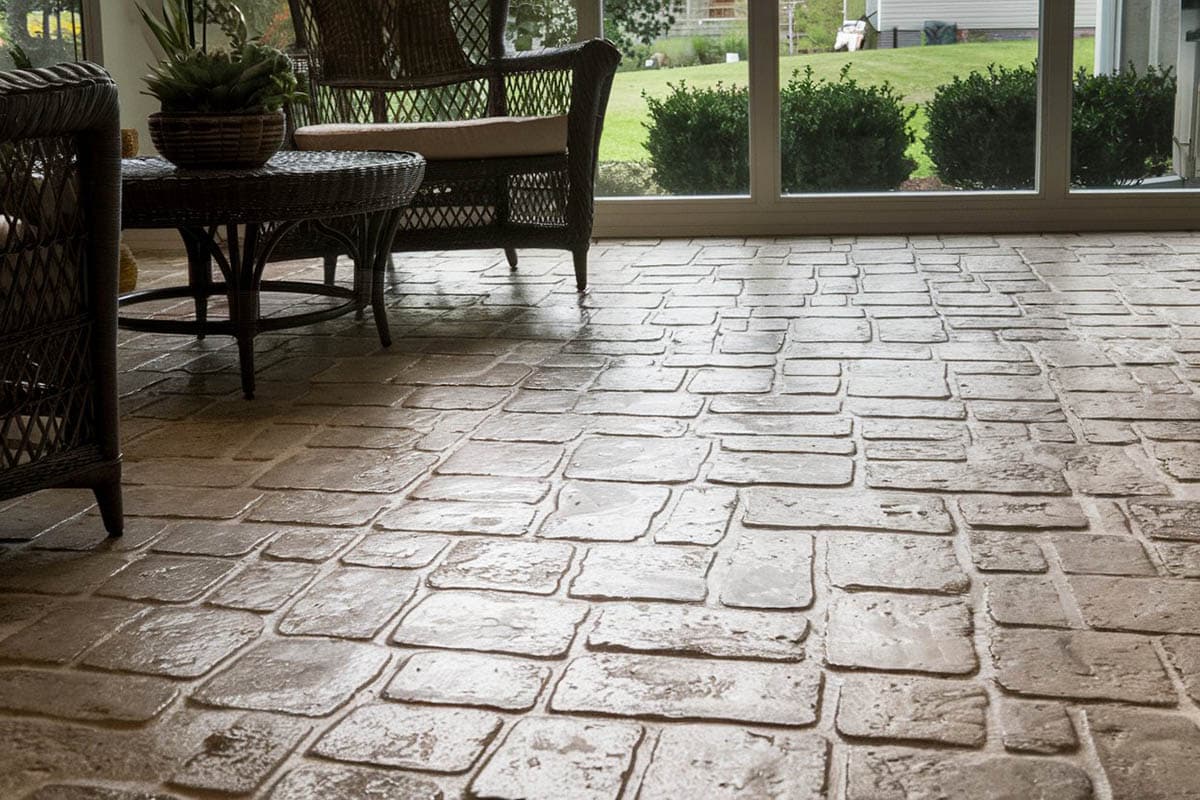
Cobblestone is often revered for its classic beauty. We tend to associate it with roads for horse-drawn carriages and historic preservation sites. Because of this, it can be a great complement to older houses or ones that have adopted similar themes. Like bricks, there is a lot of freedom in cobblestone patterns. They can be a standard running bond or even square imprints side-by-side. It can also take on more circular patterns flowing into one another to create a beautiful design.
If you really want a historic feel with your cobblestone, you may go for the original, rougher pattern. This usually includes copying the shape of irregular, rounded stones with deeper impressions between them. These uneven patterns are more faithful to how cobblestones started, but it could be challenging for someone with limited mobility to navigate.
Stamped Flagstone
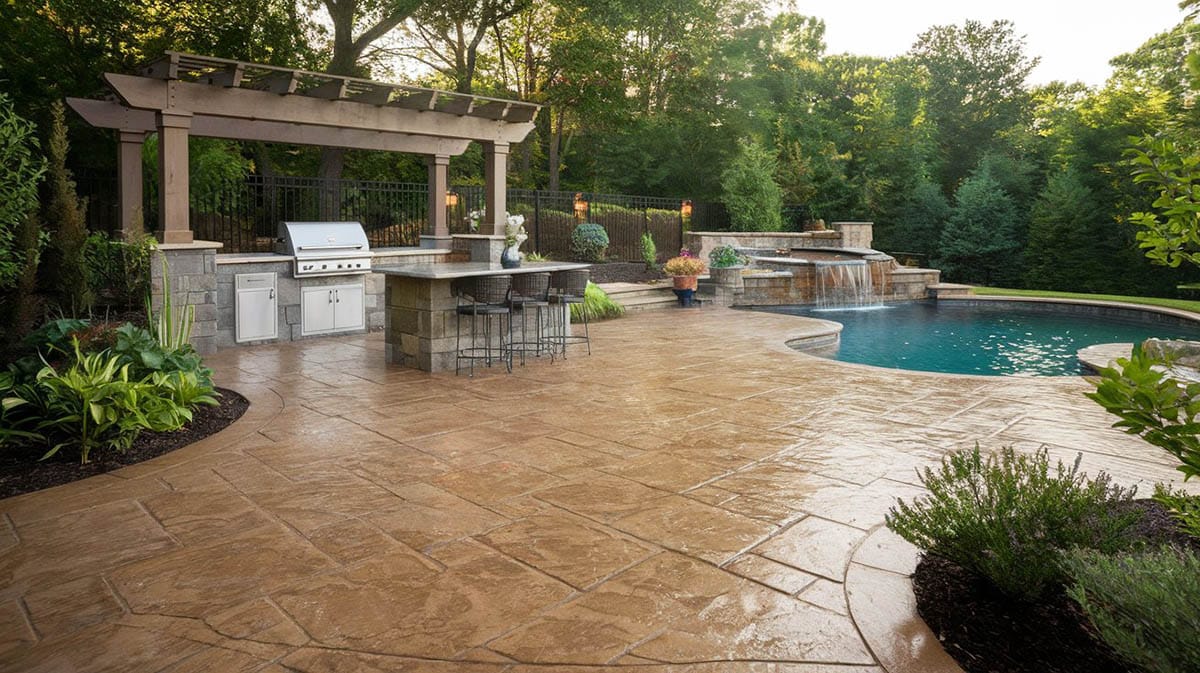
Flagstone is a flat stone used for walkways, patios, flooring, and fencing. While more modern than cobblestone, flagstone patios have been a popular choice for quite a while. Stone patios of any kind are appreciated for their one-of-a-kind appearance. These stamps typically resemble stones with irregular shapes, meaning even patios with the same concept may look wildly different.
Since this type of stamping is meant to resemble stone, it can also yield unique color patterns as well. The caveat is that if you want a realistic-looking stone stamp, it usually includes hand-stained designs and more intensive installation, so it potentially comes with a bit of a higher price tag than other patterns.
Flagstone is also praised for its smooth surface. While using varied shapes, the surface is usually rather flat. Stamped concrete is also at an advantage over real flagstone because the risk of grass growing between the stone shapes is virtually unheard of with the right upkeep. This advantage makes it one of the easier options to navigate.
Stamped Wood Concrete
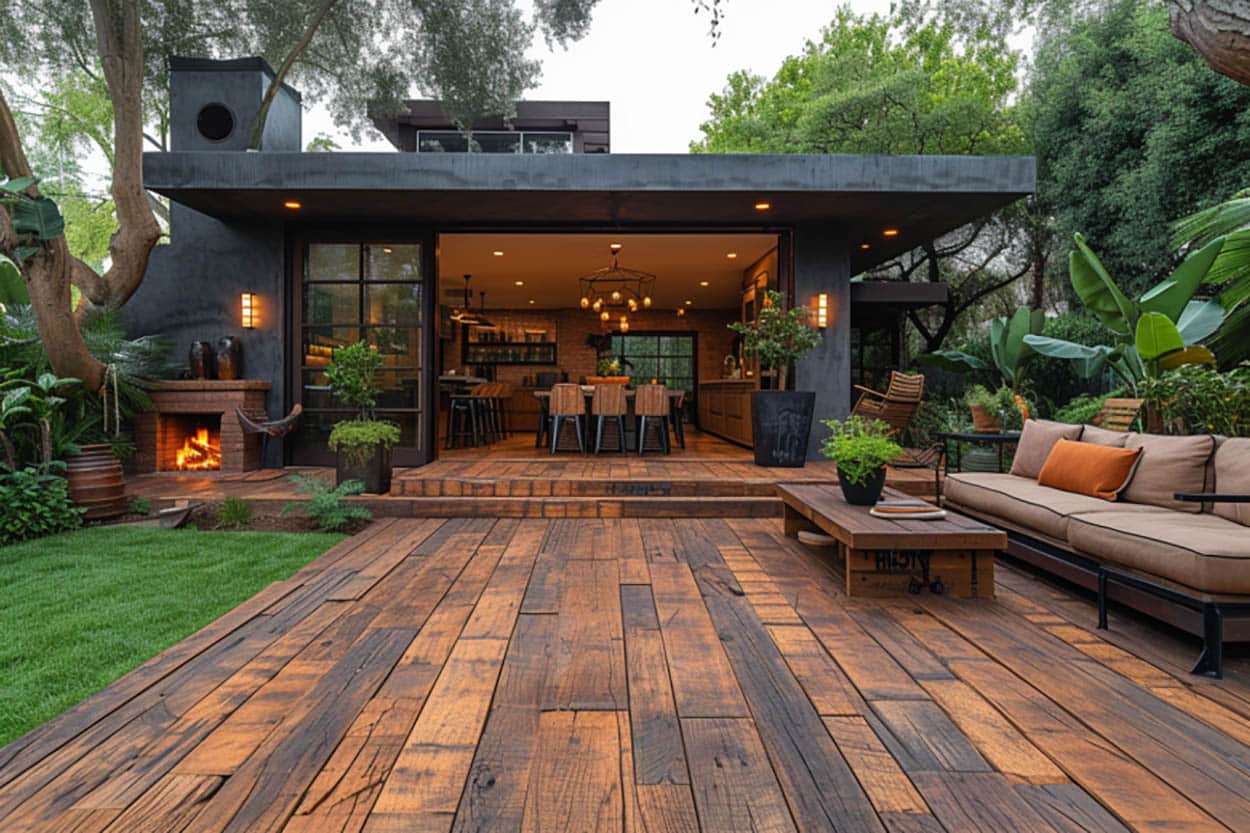
Stamped wood concrete is an option that provides the aesthetics of wood without some of the downsides of choosing wood. Wood flooring and patios require significant maintenance over the years, whereas wood-stamped concrete only needs to be re-stained when the color begins to fade. Wood stamped concrete is also much more durable than genuine wood flooring, which can be prone to gaps and scratching.
This style can be stained to resemble virtually any kind of wood, so it can easily be made to match the existing decor in the home. This also gives homeowners a range of options as to what fits their decor. Essentially, they have nearly as many options as they would have when choosing wood styles – even down to imitating grain patterns. Another advantage of wood stamped concrete is its affordable price, which is lower than that of traditional wood.
Stamped Roman Slate
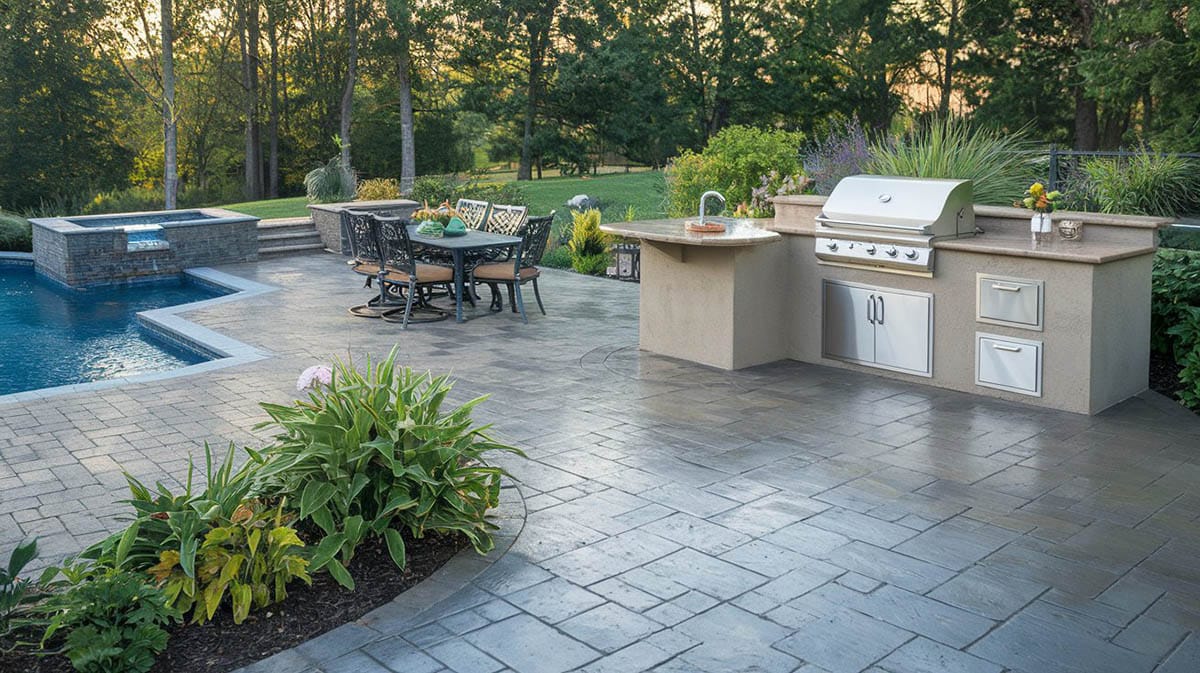
Roman slate is probably one of your simpler design options while still offering a distinct difference from the standard smooth concrete finish. Much of this comparison comes from the fact that Roman slate is often used in large tiles or even large, more continuous slabs. Roman slate can also take on more of a brick-shaped pattern, but this isn’t its most popular form. Even accounting for its layout, there are distinct differences in Roman slate and plain concrete. Namely, it’s textured.
Roman slate stamps are made to resemble the natural patterns you’d expect from stone, which gives it what many think of a more high-class appearance. These textures are also paired with interesting color patterns. Since they are meant to be natural, it’s common for shades or pairs of colors to come into use.
This texture is also praised for its versatility which allows it to fit in with almost any architectural design. Because its surface is slightly ridged without having deep depressions, it’s a common choice for poolside patios since it’s easy to walk on and helps add more traction than unstamped concrete.
Stamped Colors
Aside from the imprints themselves, a big appeal to stamped concrete is the color choices they offer. While dyes can be mixed in with the concrete before pouring it dry color pigments on the surface before stamping stands as another way, it’s worth taking a closer look at these processes. For one, there are integral color pigments. This is done by infusing the concrete with rich, resistant-to-fading colors during the mixing process.
On the other hand, there are dry-shake color hardeners. That comes as powders. These are used directly after the concrete is laid. At the same time, it was initially broadcast by hand and then instilled deeper by the use of a float or trowel. These are the colors that are laid on before stamping.
Many contractors use them together instead of depending on one or the other. This allows them to create more in-depth and longer-lasting designs. There are a few color options when it comes to stamped concrete. There are a few patterns that are used more often than others. White-on-white designs have a lot of appeal. They create a high-end, sleek, and modern look. In addition, they stay cool even in the hot sun, making them especially high demand for pool decks.
Varied colors are also common, especially with brick-stamped concrete. These can be done to mimic the look of natural stones. These may cost more since many contractors color this concrete by hand or use custom mixes. Overall, the aim of this style of patio is, typically, to match the existing design of the architecture of your house. This way, the design is seamless and doesn’t clash.
Stamped Decorative Concrete Cost
While aesthetics weigh heavily on home design decisions, the cost of that design plays a huge role for most homeowners. Here, we will compare the cost of purchasing, installing, and maintaining a concrete patio to alternative options. So, exactly how much does it cost to put in a stamped concrete patio? Stamped applications are not as expensive as you might think but there are variations on price depending on what you choose.
If you’re going for one color and one pattern, you can expect to pay around $8-$12 per square foot. Two to three colors and a contrasting border will bring it up to $12-$18 per square foot. The price can jump higher for more complex patterns or hand-stained designs. By comparison to the actual material that stamped concrete mimics the patterns of, though, this is a much more affordable price. Brick, for instance, costs $14 to $20 per square foot while stone, marble, or slate sit in a range of $17 to $28 per square foot.
The cost of a stamped concrete patio depends on more than the cost of the material alone. As mentioned before, it also depends on the type of pattern you choose. Choices such as hand-applied stain accents and multiple design patterns will run at a higher price.
How Long Does Patterned Concrete Last?
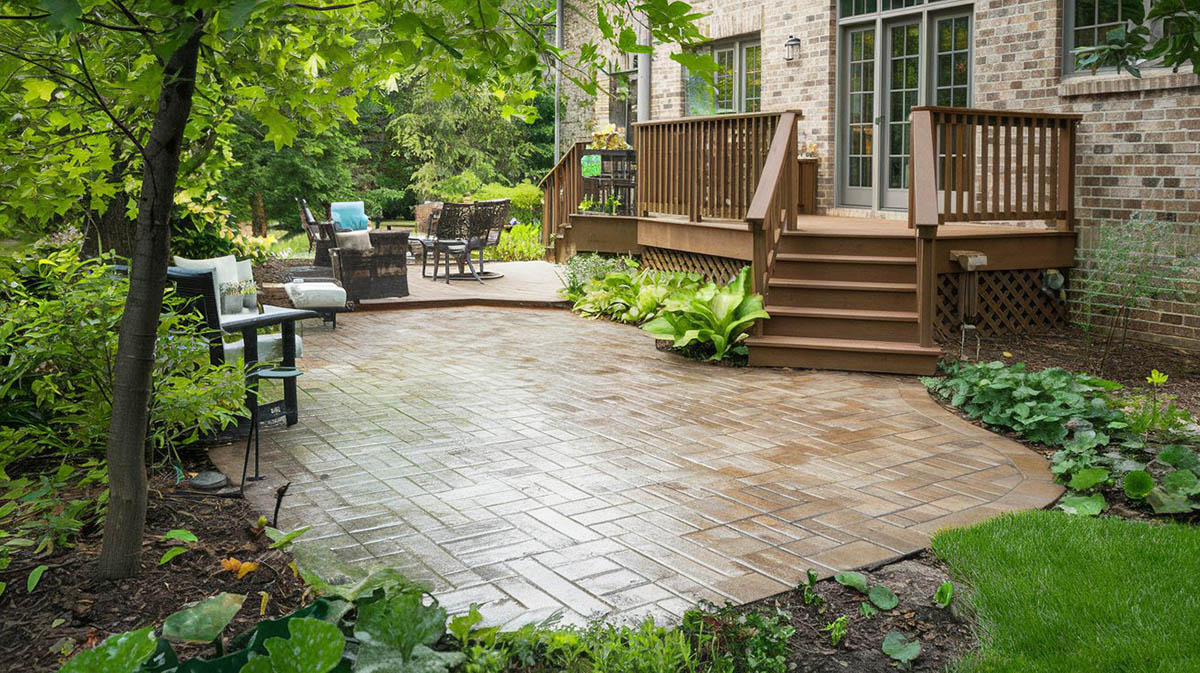
As with any other home renovation, the longevity of patterned concrete is an important factor to consider before it is installed. With the cost of installation as it is, the product must last as long as possible. In the past, stamped concrete was prone to premature cracking and, therefore, had a shorter lifespan than traditional poured surfaces.
However, stamping the concrete to a uniform depth has become easier in recent years, increasing its durability and lifespan significantly. Patterned and textured concrete now has a lifespan similar to traditional applications, lasting about 25 years.
The sealants used in stamped concrete may make it last slightly longer than its traditional counterpart. These sealants are added to protect the quality of the design and color, but can also prevent cracking. As stamped concrete ages, it may begin to look chalky or faded. This can be reversed by adding a fresh layer of sealant, which should be done every three to four years.
Problems With Concrete That Is Stamped
Of course, while it offers a lot of value, stamped concrete has its drawbacks just like any other material you might use. For one, the surface colorants used in stamped installations don’t always last as long as the material. Luckily, this can be combated by having dyes mixed in before it’s poured and stamped, as discussed earlier.
Deep depressions are also a concern, but this also comes down to design choices. A deeper set design could be a problem for those with limited mobility. ADA guidelines suggest no ridges should be higher than ¼” when accommodating for those with limited mobility.
One more problem to consider is that if the concrete is laid improperly, you may have ridges around the stamped patterns. To avoid this, it’s a good idea to look around at what people say about the contractor they’re considering before hiring them.
One point that some may consider a drawback is that concrete takes a while to set. During and after installation, you should be prepared to avoid your patio for as much as 3 to 5 days not to damage the design. It could help to get the job done during a time of year that you don’t frequent your patio. Read more about stamped concrete pros and cons here.
Stamped Vs. Pavers
Of course, when considering a patio design, it’s important to consider a wider range of options. Alongside stamped concrete, the choice of pavers frequently comes up. So, it’s necessary to consider these choices measured against one another. First, both designs allow for much variation, but there is a point when stamped concrete wins out. While pavers are mostly limited to stone designs, stamped, as we’ve discussed already, can imitate almost anything.
There is also the matter of safety against trips and slips. While smooth concrete is associated with the danger of slips and trips, stamped concrete’s texture helps reduce the risk. Pavers can also get slick on rainy days, but the grout lines help with drainage. As for other weather conditions, you may see that pavers are just slightly easier to put your bare feet thanks to their low heat absorption.
The level of upkeep between concrete and pavers is both a give and a take. While concrete needs resealing once every few years, pavers also need the lines between slabs filled periodically.
Stamped Design Concrete Vs. Pavers Cost
Cost is another key to this comparison. As we’ve already explored, the cost of stamped concrete can vary anywhere from $8 to more than $18 per square foot depending on the design you go with. Concerning this distinction, though, concrete has a clear advantage over most paver options. The cost of pavers depends on the material being used as a paver.
At the lower end, a stone patio is relatively inexpensive and does beat out most stamped concrete for an average of $4 to $8 per square foot. Moving up from there, brick pavers cost about $10 to $15 per square foot and slate averages about $15 to $20 per square foot. There is also the upfront and long-term costs to consider, however the upside is the enhanced curb appeal and home value. Some point to paver as the better choice because it’s an easier DIY but renting or buying everything needed to do it adds up fast.
Pavers are also more likely to need replacement or repair. Concrete maintenance mostly relies on resealing, which can cost as little as $0.05 to $2.50 per square foot.
Can Existing Concrete Be Stamped?
Being able to stamp your existing concrete patio can depend on a few factors. First and foremost, a heavily damaged patio may not be able to be resurfaced. You can usually contact a contractor to see if your surface can be stamped and get an estimate.
The second factor is placement. Laying a bit of new concrete over the old is going to add about an inch or two to the height. This is usually fine but can be an issue if it touches your siding or interferes with step placement. If your patio fits this criterion, stamping should be doable. It also is potentially cheaper since the material isn’t being laid from the ground up.
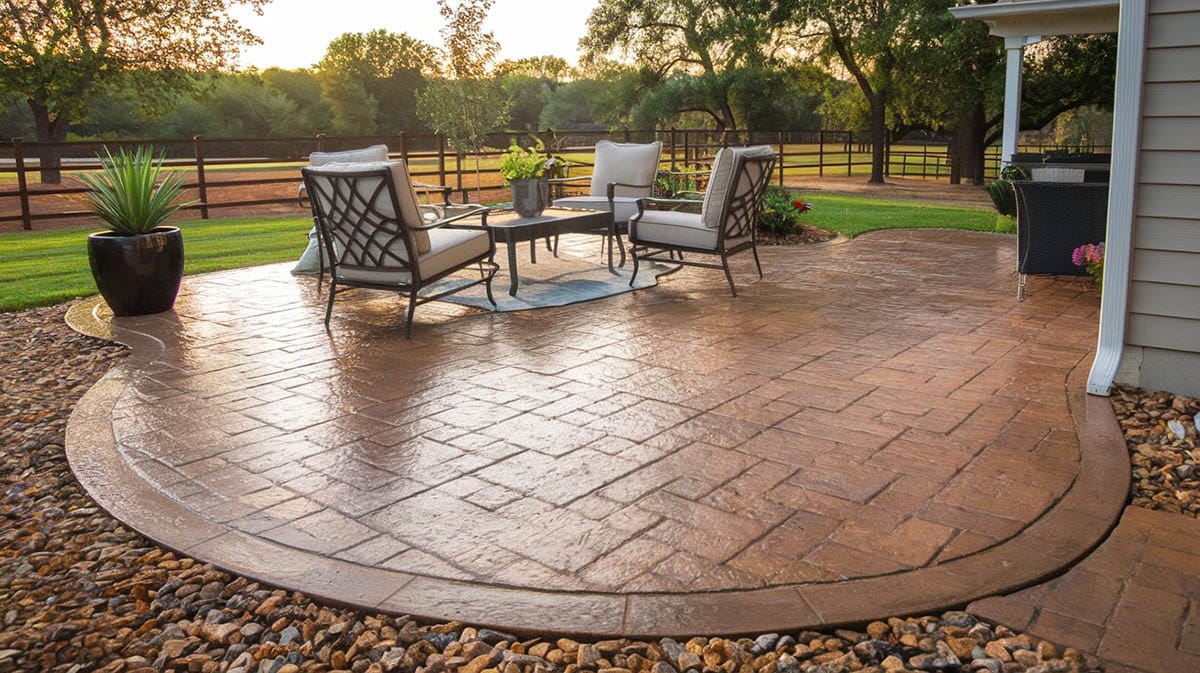
Can This Concrete Be Painted?
As home decor changes, it may become prudent to paint stamped concrete to match the rest of the home. Concrete is a porous material that easily soaks up paint when applied. In addition, all of these patios tend to fade over time. So, whether you want to change the overall look due to changes in style or sunlight, you can restain or repaint to give it a brand-new appearance.
Unlike traditional concrete, however, stamped surfaces have a texture that can affect how the paint collects on the surface, resulting in pooling in the grooves. This can be prevented by hand painting the surface rather than rolling or spraying it. Before the stamped patio can actually be painted, a few steps need to be completed so that the concrete accepts the paint as best as possible.
First, the stamped surface must be cured for at least one year before applying paint. If the paint is applied before the concrete is cured, the salt and moisture within the material will cause the paint to loosen from the surface.
Stamping a Concrete Pool Deck
Stamped concrete works as a great material for pool decks. It can be made to resemble stone that may not otherwise be ideal for the deck. When sealed properly, stamped surfaces are resistant to wear from pool chemicals such as chlorine and perform well with water exposure. However, the deck will need to be resealed periodically to ensure that it continues to resist wear over the years.
Most contractors suggest sealing your concrete pool deck at least every few years for the best results. But, as we pointed out earlier, this isn’t anywhere near as much of an investment as the initial installation.
Are Stamped Surfaces Slippery?
When choosing materials for a walkway or pool deck, it’s important to pick a material that won’t spell out trips and falls for wet feet. Luckily, stamped surfaces have texture, so they are significantly less slick than conventional concrete. However, it’s important to remember that even stamped surfaces can become slippery if wet.
There are a few ways to increase the slip resistance of your walkway or deck to keep everyone safe poolside or in the rain. Stamping with a deeper or more detailed design is one way to do this. Another way to decrease the chance of falls is to add a non-slip additive to the stamped concrete patio. to work with you to ensure that the walkway or deck is slip-resistant.
Visit our gallery of ideas for patios for more ideas for your home’s backyard.


